Writing
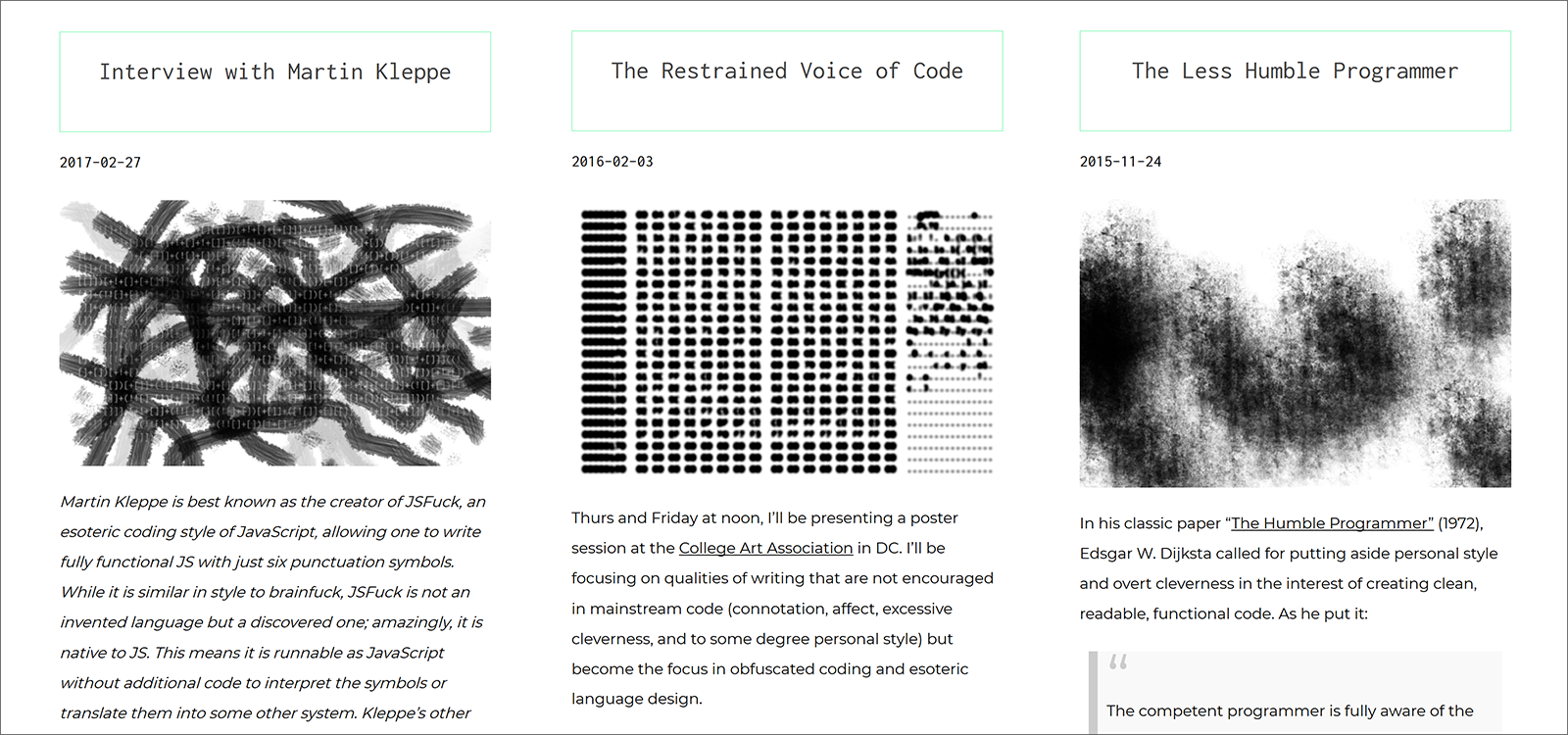
Esoteric.Codes
2011 - now (ongoing)
An ongoing research project documenting experiments in language and code, including code art, code poetry, esoteric programming languages, and other works that break from the norms of computation.
Winner of the 2014 ArtsWriters.org grant from Creative Capital and the Andy Warhol Foundation.
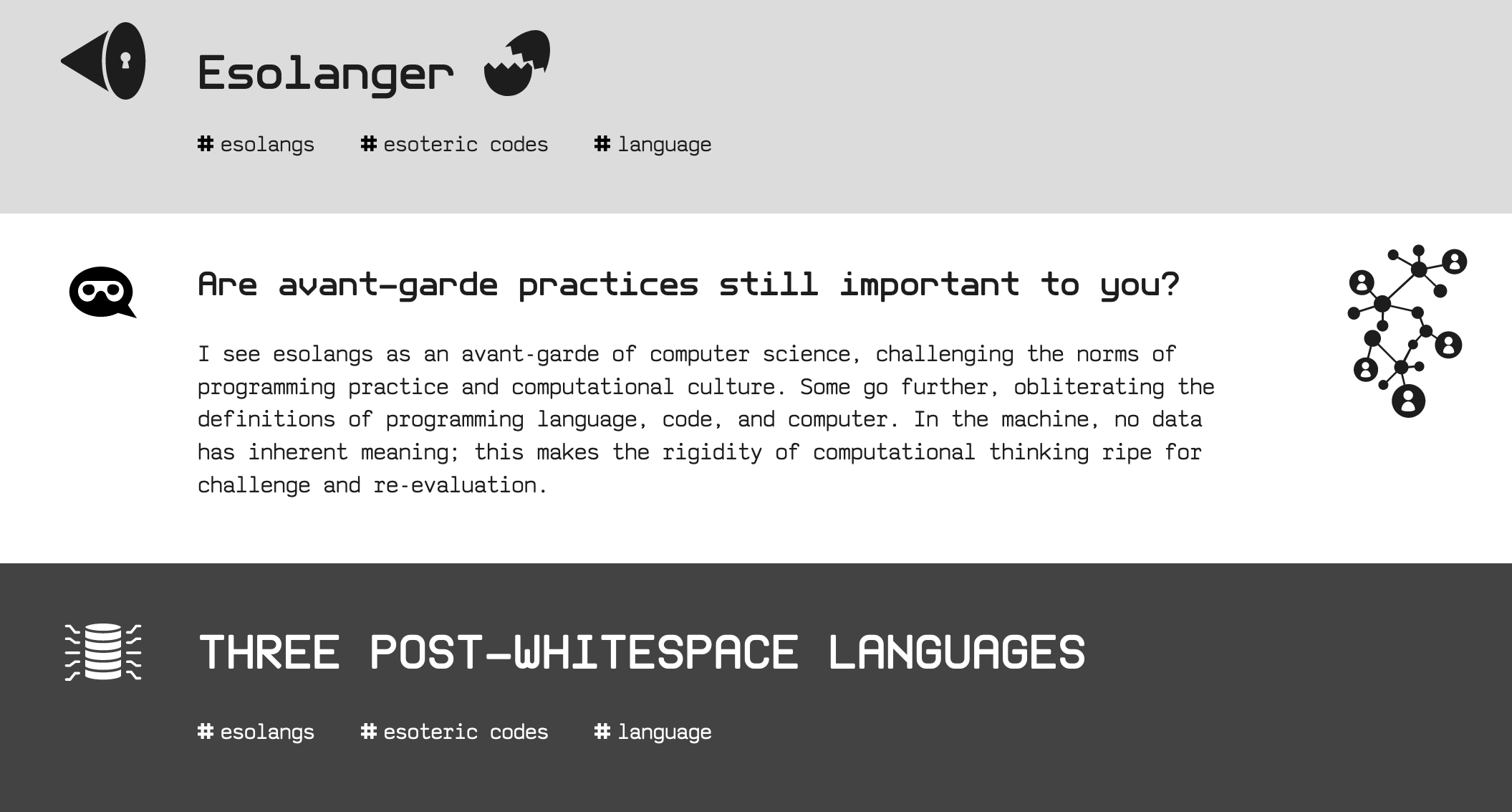
Three Post-Whitespace Languages
perspektive, 2020
Three languages use the central conceit of the infamous Whitespace programming language to embrace the dematerialization of code
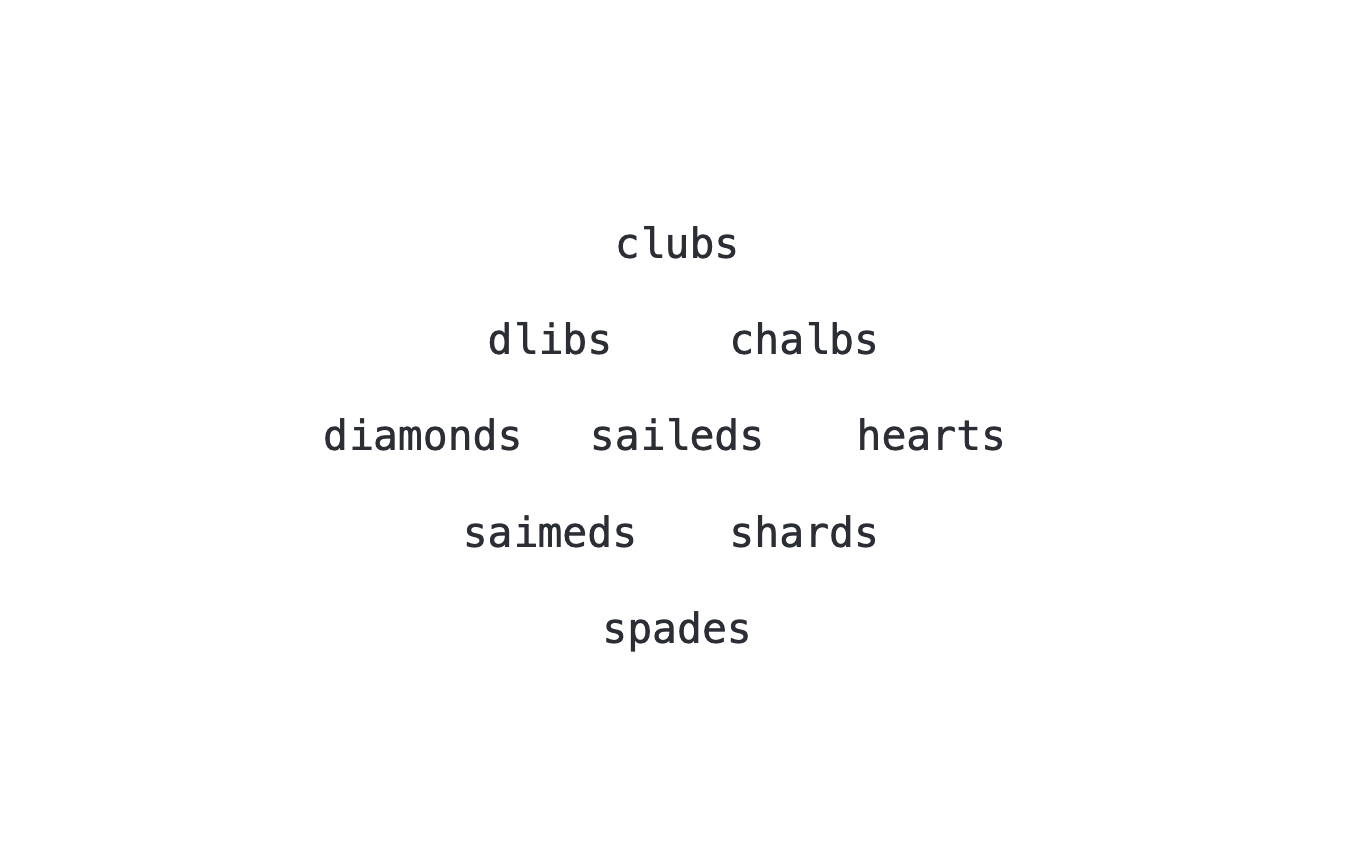
The Hacker Aesthetic of Minimalist Code
Hyperallergic, 2020
Ask most programmers about minimalist programming and they invoke the word elegance, yet working with extreme code minimalism often means exposing the chaotic underside of our engagement with logic.

The visual impact of sound: Glitchometry
XRDS: Crossroads, The ACM Magazine for Students
April 2018
This is the piece where I explicitly set out the constraints of Glitchometry: what I allow myself to do and what is off-limits, in order to keep the process an intuitive one.

Entropy and FatFinger
Challenging the Compulsiveness of Code with Programmatic Anti-Styles
Leonardo (MIT Press)
2018
Coding, the translating of human intent into logical steps, reinforces a compulsive way of thinking, as described in Joseph Weitzenbaum’s “Science and the Compulsive Programmer” (1976). Two projects by the author, Entropy (2010) and FatFinger (2017), challenge this by encouraging gestural approaches to code. In the Entropy programming language, data becomes slightly more approximate each time it is used, drifting from its original values, forcing programmers to be less precise. FatFinger, a Javascript dialect, allows the programmer to misspell code and interprets it as the closest runnable variation, strategically guessing at the programmer’s intent.
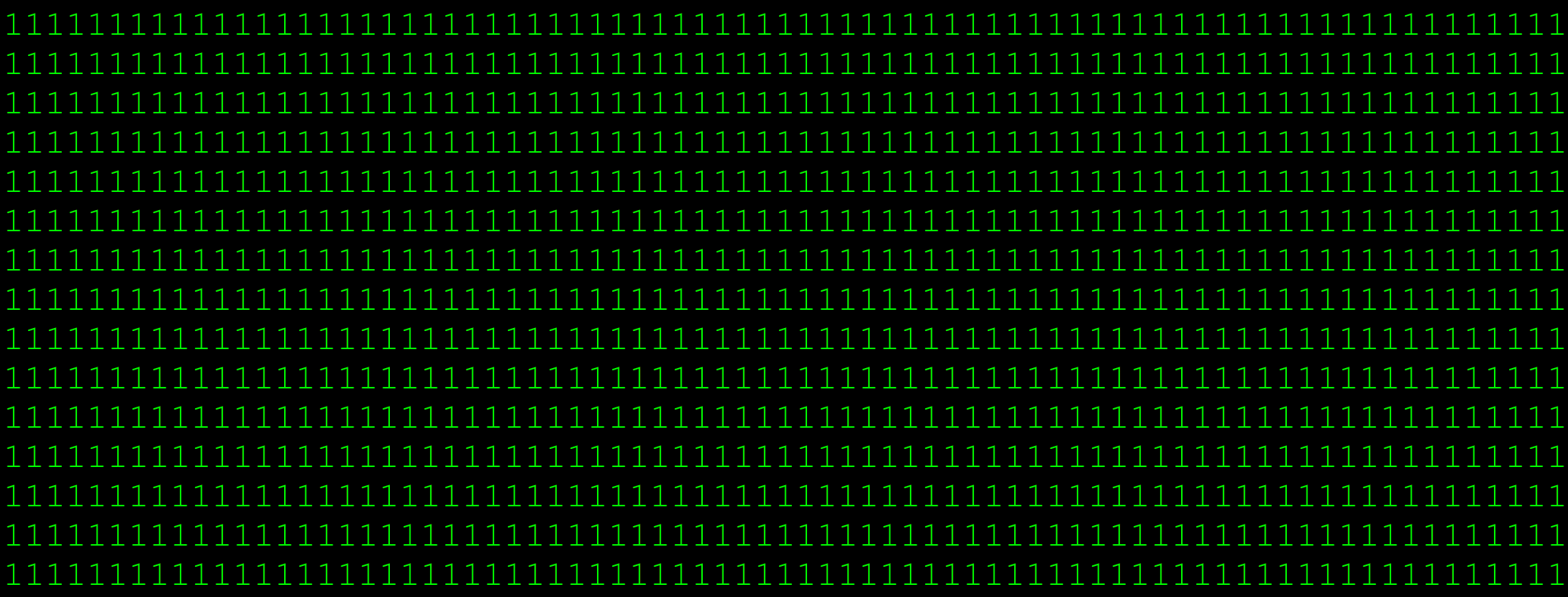
Language Without Code
Intentionally Unusable, Uncomputable, or Conceptual Programming Languages
CITAR Journal
2017
The esoteric class of programming languages, commonly called esolangs, have long challenged the norms of programming practice and computational culture. Esolangs are a practice of hacker/hobbyists, who don’t primarily think of their work as art. Most esolangs are experiential works; we understand the languages by writing code in them. Through this action, the logic of the language becomes clear. However, a smaller subset of esolangs make their point not through actively writing code, but instead by simply contemplating their rules. We can think of these esolangs as conceptual rather than experiential. Some are designed in such a way that they don’t allow any code to be written for them at all. By stepping away from usability, the conceptual esolangs offer the most direct challenge to the definition of programming language, a commonly used term which is surprisingly unspecific, and usually understood through utility, despite the fact that programming languages predate digital computers. This paper delves into the conceptual esolangs and looks at their challenge to the idea of programming languages.
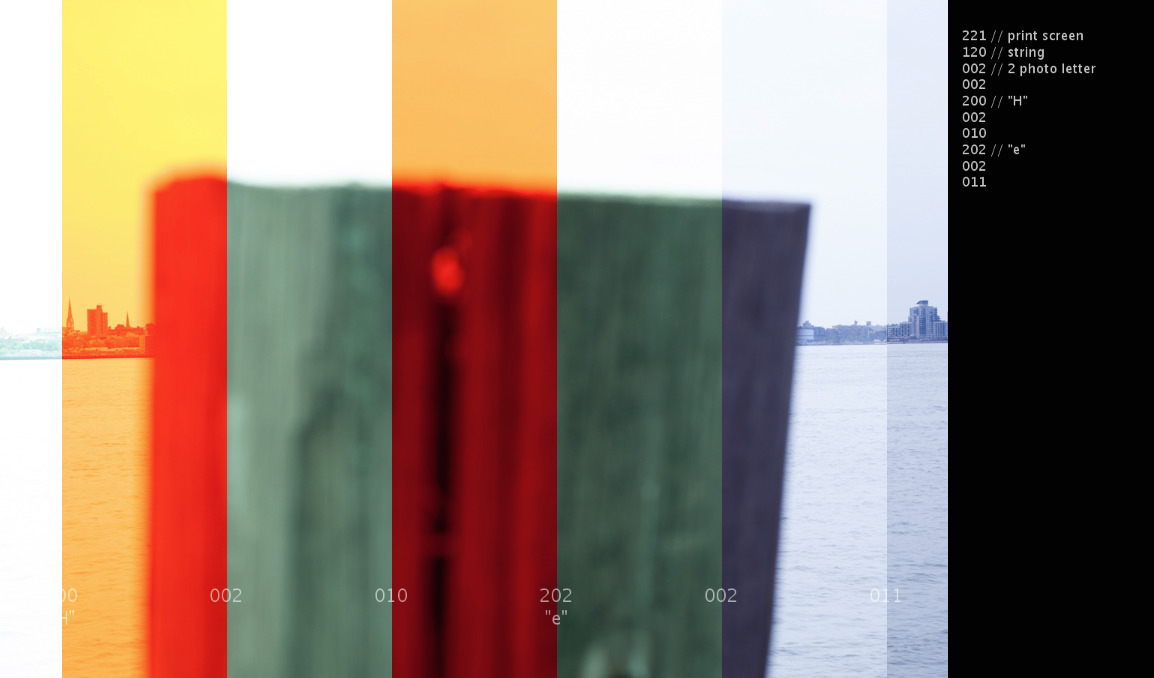
Light Pattern
Writing Code with Photographs
Leonardo (MIT Press)
2015
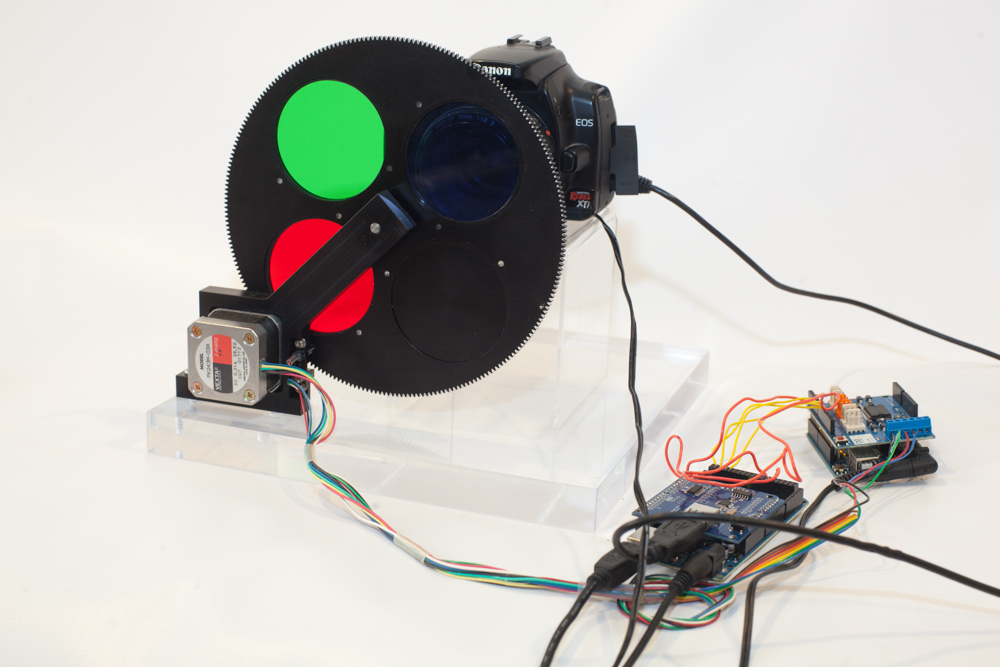
Light Pattern
Building an Algorithmic Photography
International Center of Photography
2015

Twisted Glyphs
Grafik Magazine
2014
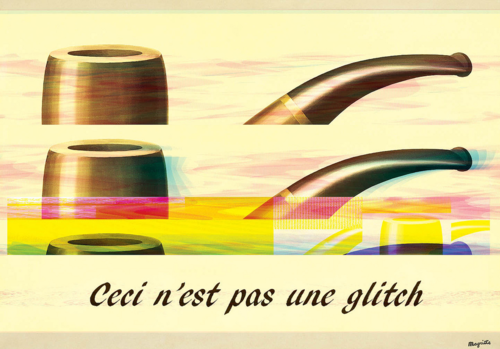
Glitch && Human/Computer Interaction
NOOART, 1st Issue
2014
brainfuck
Media-N Journal
2013
Programming languages are perhaps the most direct conduit between human and machine: here our commands translate into machine instructions. Brainfuck, a programming language created in 1993, uses this process of translation to explore the breakdown of communication and expose how computers train us to think.
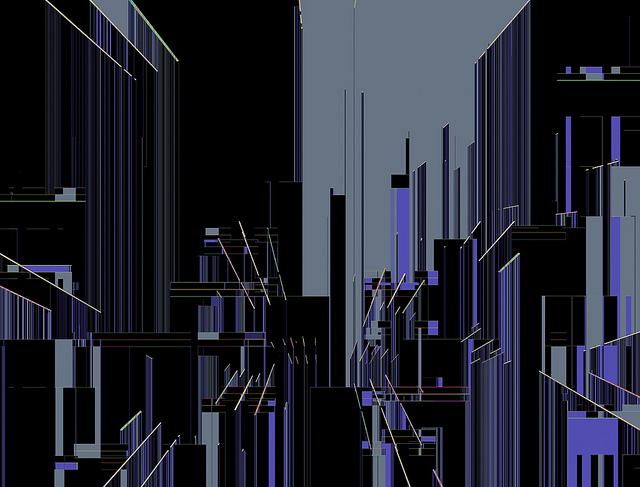
Notes on Glitch
World Picture 6
2011
An off-and-on confabulation taking place between the authors for over a year—a collaborative attempt to both define and theorize a set of practices that is known by various names: databending, datamoshing, image hacking, and of course glitch art. These “notes” are not intended to be exhaustive or in any sense final, but instead represent a set of loosely organized postulates that others might revise, debate, critique or extend.
Includes gl1tchw0rks gall3ry, a collection of images by glitch practioners.
List of Glitch Tutorials
A list of tutorials for those who want to glitch themselves, rather than through tools. Compiled in 2010, and, although there are plenty of newer tutorials, these basics still work.